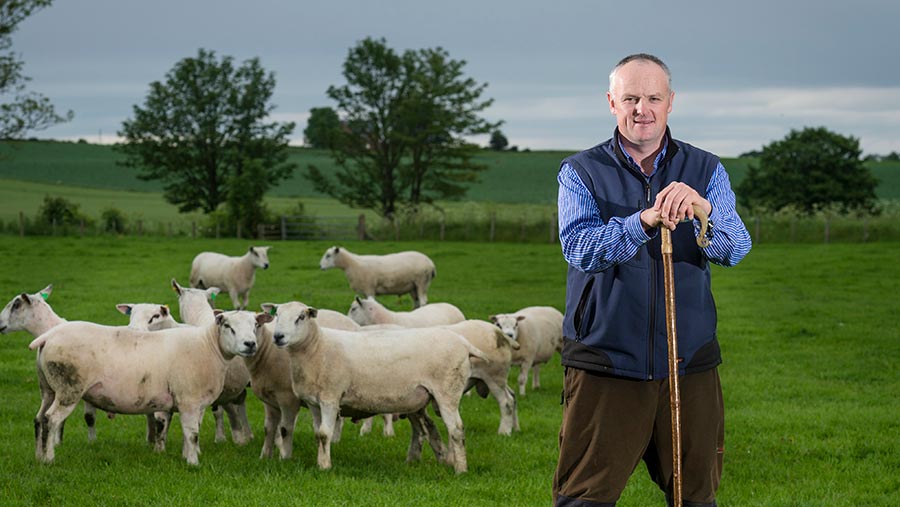Farmer Focus: Heifers heavier on the year
 © Jim Varney
© Jim Varney This is without doubt my favourite time of year. Everything is green (or trying to be green), you can see growth on a daily basis and sometimes you can even smell it.
It’s a delicate smell that can only be picked up on the days our friendly pig-farming neighbour doesn’t deliver his own special product – which also has a unique aroma.
There’s a an air of optimism around the farm. After a long lambing, which hasn’t been plain sailing, we are now all looking forward to summer.
See also: Read more from our livestock Farmer Focus writers
Cutting feed bills
There is no doubt a kind winter reduced feed bills, but extra weight on lambs – in particular outdoor-lambed singles – has been a real issue. By the sounds of things we are not alone.
Tailing and vaccinating is well under way and plans are being formed for early weaning of all lambs.
We are in the process of sowing two different red clover mixes, which will be used to finish lambs after weaning; one has 40% and the other 60% red clover.
Time will tell whether either do the job, but our plan is to swing back to finishing as many of our own lambs as possible now that staff numbers have returned to normal.
Beet varieties
Following a successful first year growing fodder beet, we intend to sow another 30ha this year. We have refined our selection to six varieties.
Yearling cross-bred Shorthorn heifers weighed 428kg, 28kg heavier than their counterparts that were housed until February turnout last year. Pure bred Shorthorn heifers averaged 398kg, 0.5kg heavier.
Most of this year’s purebred heifer calves were born in the latter half of the calving period and were therefore younger, hence no improvement in weights.
Cross-bred heifers are now being marketed as high-health bulling heifers through Dingwall and Highland marts, while for the first time we will keep only stud Shorthorns to bull.
They will be mated to two different New Zealand/Australia embryo transfer two-year-old bulls, which have been selected for their ease of calving, easy fleshing and maternal attributes.
It’s important to keep up to speed with what’s going on in other parts of the world, so I have decided to embark on a short study tour to NZ in June. My next article might contain livestock of a different variety – there’s a fair chance lions might be mentioned.
John and Fiona Scott farm 200 suckler cows and 4,500 breeding ewes, as well as some crops across 2,226ha. He also has two contract farming operations and generates energy from a small-scale wind turbine and biomass boiler.
